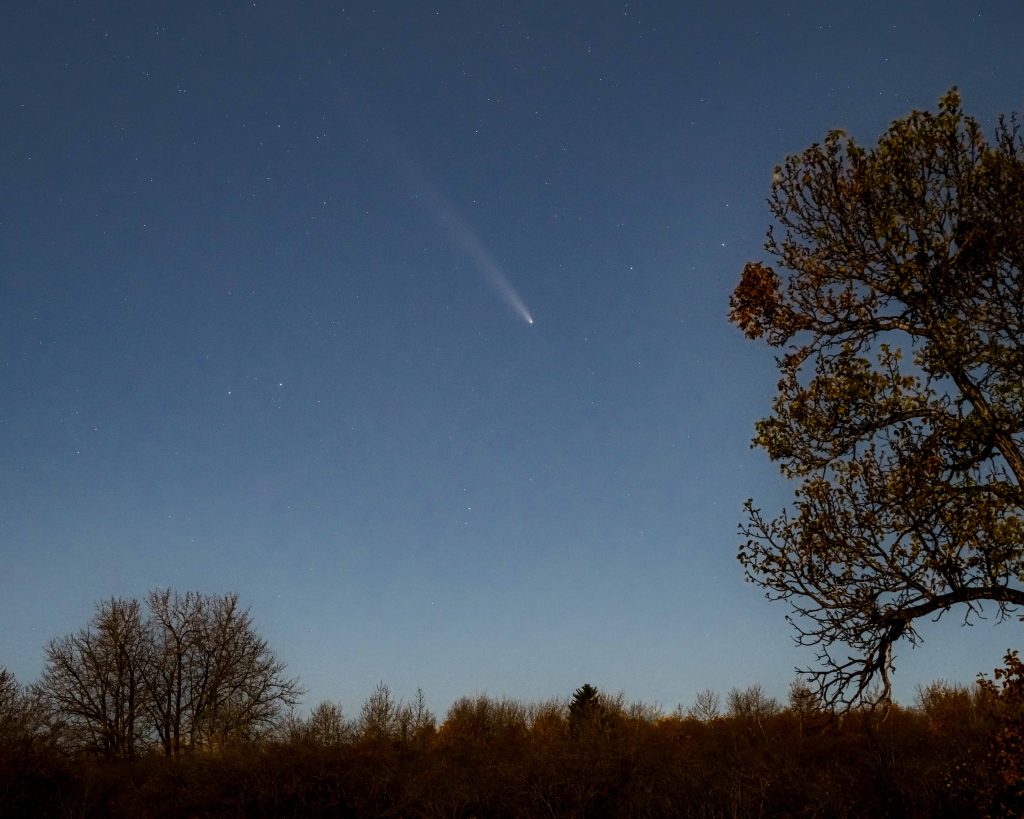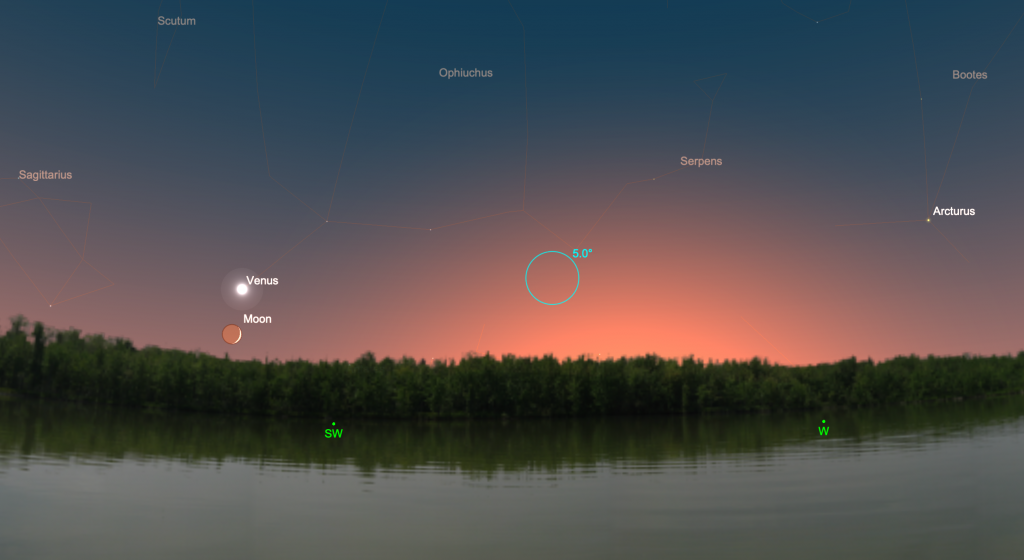
(Looking for last month’s ‘Night Sky’? Find it at this link…)
Comet C/2023 A3 (Tsuchinshan–ATLAS) lived up to expectations last month and still lingers in the evening sky as a binocular object. Sadly, the potentially spectacular sungrazing Comet C/2024 S1 (ATLAS) disintegrated on Oct. 28 as it made a close pass of the Sun. But November still has plenty in store with longer and colder stargazing sessions for northern observers while southern-hemisphere stargazers enjoy the warmer nights of spring. For deep-sky observers, there are plenty of open star clusters in Cassiopeia and Perseus and galaxies in Pegasus, Andromeda, and Sculptor. Orion rises well into the evening and dominates the southern sky after midnight, while the stars of northern spring rise before dawn. Saturn remains in the sky, still in a good position for viewing, while bright Mars and brilliant Jupiter dominate the sky after midnight. Here’s what to see in the night sky this month.
1 November 2024. New Moon, 12:47 UT
3 Nov. Daylight savings time ends for most in North America. Use at least some of your extra hour for some after-dinner stargazing!

4 Nov. After the sun goes down, look low in the southwest to see a slender crescent moon about 3.5o south of Venus. You need a clear view of the horizon to see the pair. Venus appears (in a telescope) about ¾ illuminated and shines at magnitude -4.0.
6-12 Nov. The Taurid meteor showers peak this week with only a little moonlight around to obscure the view. There are two Taurid showers, the Northern and Southern Taurids, and they both peak in late October through mid-November. They’re sometimes called the Halloween Fireballs. You can see these bright, slow-moving meteors in the northern and southern hemispheres at essentially any time of night. This event usually shows 5-10 meteors an hour, although some predictions suggest more plentiful meteors this year.
9 Nov. First Quarter Moon, 05:55 UT

10 Nov. The waxing gibbous moon lies about half a degree from Saturn tonight. With an apparent diameter of 18″, the planet still shines at magnitude +0.9 and remains a promising target in a telescope. Observers in Central America, northern South America, and south Florida see the moon occult the planet. This link has timing of the occultation for numerous locations.
12 Nov. Neptune lies roughly half a degree south of the moon, and observers in much of North America (except for the northwest) see the moon occult the planet. Timing and details at this link.
14 Nov. Moon reaches perigee at a distance of 360,109 km at 11:00 UT
15 Nov. Full Moon, 21:29 UT (the full ‘Beaver Moon’). This is also a ‘super moon’ since it occurs at perigee; the Moon appears 14% larger than when it lies at apogee.
16 Nov. Saturn ends its retrograde motion and begins moving eastward once again against the background stars.
16 Nov. Mercury reaches greatest eastern elongation about 23o from the Sun. It lies about 19o east of Venus in the evening sky – a challenging sight in the bright twilight.

17 Nov. Uranus reaches opposition as it rises in the east as the Sun sets in the west. This distant ice giant lies just at the edge of naked-eye visibility at magnitude +5.7 with a disk that spans about 3.7″. You can see it with binoculars or telescope about 6o southwest of the Pleiades. Uranus remains visible through the end of 2024 and into the new year in this part of the sky. If you have dark sky, try to see the planet without optics. Although the planet was plainly, though not easily, visible to pre-telescopic stargazers, it wasn’t ‘discovered’ until William Herschel found it with a 6” telescope on March 13, 1781. For an even bigger challenge – try to find some or all of the bright Moons of Uranus with the help of this handy-dandy moon finder at Sky&Telescope.
17 Nov. Jupiter rises in the east about 5o from the gibbous Moon. The big planet appears tangled in the horns of Taurus as it shines at a mesmerizing magnitude -2.8 and spans nearly 48”. The planet reaches opposition next month – from now through March is the best time to observe this big and complex world.
17-20 Nov. The Leonid meteor shower has been quiet these past many years and it remains a modest shower despite some historical outbursts. The shower occurs as the Earth passes through the path of the periodic Comet 55/P Tempel-Tuttle. A peak of 15 meteors per hour is typical for the Leonids. But nothing’s assured and a few extras may arrive. Leonids can appear anywhere in the sky but appear to trace their paths back to a radiant in the ‘Sickle’ of Leo. This year, the moon obscures the fainter meteors.
20 Nov. The moon continues its eastward trip along the ecliptic and this morning lies less than 5o from brightening Mars in the early-morning sky in the constellation Cancer. The planet shines at magnitude -0.2 and spans a little over 10″. It continues to brighten on the way to its January 2025 opposition.
23 Nov. Last Quarter Moon, 01:28 UT
26 Nov. Moon reaches apogee at a distance of 405,314 km at 12:00 UT
27 Nov. The waning crescent moon rises near Spica in the southeastern sky before dawn. Observers in eastern and central North America and the northeastern edge of South America can see the moon eclipse the star. Details and timing at this link.